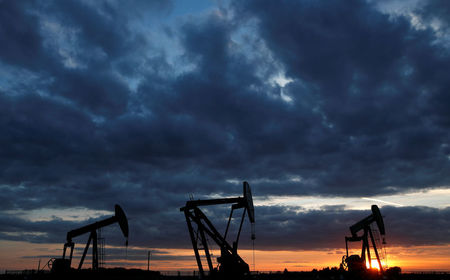Commodities
Oil prices edge lower ahead of US inflation data; OPEC maintains forecasts

Investing.com – Oil prices edged slightly lower Tuesday, handing back some of the previous session’s gains in cautious trade ahead of key U.S. inflation data, while OPEC+ kept its demand and supply forecasts unchanged.
AT 08:05 ET (12:05 GMT), fell 0.3% to $83.11 a barrel, while fell 0.4% to $78.84 a barrel.
Both contracts rose more than 1% each on Monday.
Trading ranges have been limited Tuesday due to caution ahead of key U.S. inflation data, which is likely to factor into the outlook for interest rates in the U.S. , the world’s largest consumer of energy
China outlines fiscal stimulus plans
There had been a positive tone on Monday after China’s finance ministry said that it plans to start raising 1 trillion yuan ($138 billion) through a long-awaited bond issuance this week.
The issuance is aimed chiefly to stimulate key aspects of China’s sluggish economy, and will entail the issuance of special government bonds with tenors of 20 to 50 years.
Chinese ministers said the bonds will be used to shore up sluggish economic growth, and will be deployed towards key sectors including infrastructure.
While the issuance was largely telegraphed by Chinese authorities, its confirmation still factored into some optimism over improving economic conditions in the world’s biggest oil importer.
The bond issuance came after mixed inflation readings over the weekend raised some concerns over a sustained economic recovery in China. While consumer inflation rose, producer inflation shrank for a 19th consecutive month.
remove ads
.
Canadian wildfires could cause potential supply disruptions
Additionally, major wildfires spread across Western Canada, presenting the potential for disruptions in Canadian oil and gas supplies, especially as they neared a key oil hub.
Residents of Fort McMurray, Alberta, were put on alert as the province saw two “extreme” wildfires. The city is the closest settlement to Canada’s biggest oil-sands operations, and had in 2016 suffered severe damage from wildfires.
Still, rain in the region helped decrease the immediate threat from the fires, although residents were still kept on alert.
Any worsening in the wildfires present the prospect of supply disruptions in Canada’s massive oil and gas industry, which is a key part of North American crude markets.
Canada’s worst-ever wildfire season, seen in 2023, knocked out as much as 300,000 barrels of production a day. In 2016, damage to Fort McMurray had put about 1 million barrels per day out of commission.
Uncertainty over OPEC meeting
What the group of top producers, known as OPEC+, decides to do with supply at its next meeting at the beginning of June is also causing uncertainty within the crude markets.
Iraq’s oil minister, Hayyan Abdul Ghani, is reported to have said over the weekend that his country would honour voluntary output cuts made by OPEC+, which includes the Organization of the Petroleum Exporting Countries, Russia and other non-OPEC producers, at its upcoming meeting on June 1.
That reversed course from his Saturday comments that Iraq had made enough voluntary reductions and would not agree to any new output cuts.
remove ads
.
“The lack of price direction more recently is no surprise given the uncertainty over what OPEC+ members may do with their additional voluntary supply cuts,” analysts at ING said, in a note.
OPEC, earlier Tuesday, maintained its global oil supply and demand forecasts unchanged for 2024 and 2025 in its , leaving the call on OPEC+ crude at 43.2 million barrels a day this year, rising to 44 million barrels per day in 2025.
(Ambar Warrick contributed to this article.)
Commodities
Oil prices rise; U.S. crude inventories plunge, Russia-Ukraine truce eyed
Commodities
India’s Reliance to stop buying Venezuelan oil over US tariffs, sources say
Commodities
Oil prices climb on Venezuela supply worries

 Forex3 years ago
Forex3 years agoForex Today: the dollar is gaining strength amid gloomy sentiment at the start of the Fed’s week

 Forex3 years ago
Forex3 years agoUnbiased review of Pocket Option broker

 Forex3 years ago
Forex3 years agoDollar to pound sterling exchange rate today: Pound plummeted to its lowest since 1985

 Forex3 years ago
Forex3 years agoHow is the Australian dollar doing today?

 Cryptocurrency3 years ago
Cryptocurrency3 years agoWhat happened in the crypto market – current events today

 World3 years ago
World3 years agoWhy are modern video games an art form?

 Commodities3 years ago
Commodities3 years agoCopper continues to fall in price on expectations of lower demand in China

 Economy3 years ago
Economy3 years agoCrude oil tankers double in price due to EU anti-Russian sanctions























